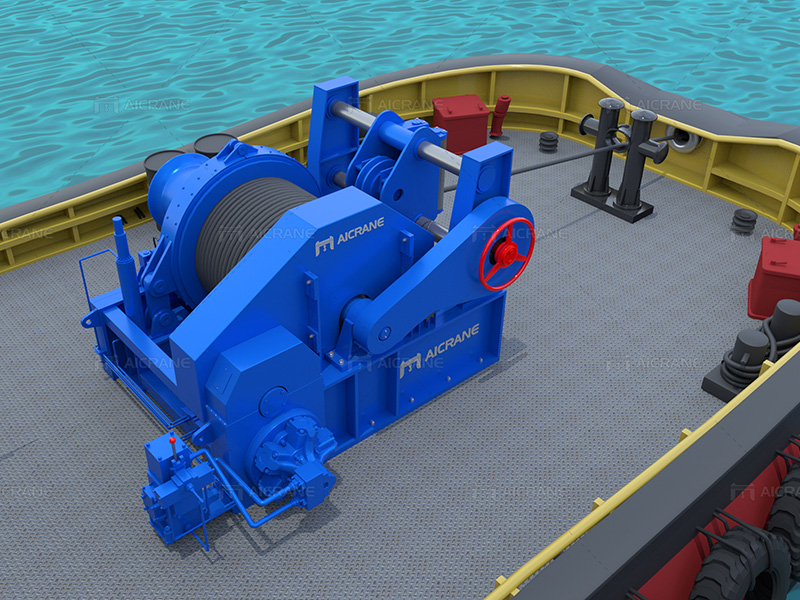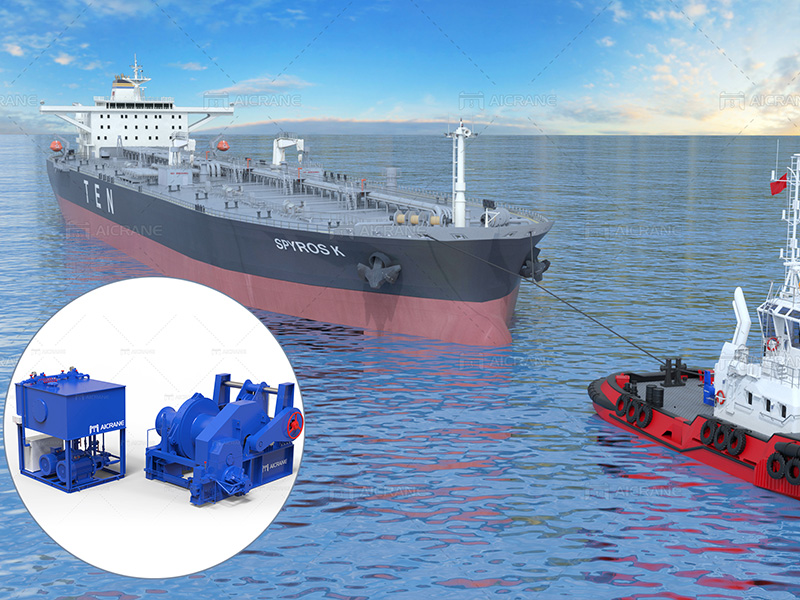Hydraulic systems play a pivotal role in the operation of various machinery, including tugger winches utilized in maritime settings. These winches are crucial for tasks ranging from towing to mooring operations, requiring robust and efficient mechanisms to handle heavy loads. Among the diverse range of winch systems available, hydraulic tugger winches stand out for their reliability and power. In this article, we delve into the intricate workings of the hydraulic system that drives these indispensable maritime tools.

The Basics of Hydraulic Tugger Winches:
Before delving into the hydraulic system’s mechanics, it’s essential to grasp the fundamental components and functionalities of a hydraulic tugger winch. Tugger winches are primarily designed to handle the pulling or lifting of heavy loads on ships, rigs, or offshore platforms. They consist of a drum or spool around which a cable or rope is wound, connected to a power source for operation.
Understanding the Hydraulic System:
At the heart of a hydraulic tugger winch lies its hydraulic system, which provides the power necessary for its operation. This system comprises several key components working in tandem to convert hydraulic energy into mechanical force.
Hydraulic Pump: The hydraulic pump serves as the heart of the system, responsible for generating hydraulic pressure. Typically powered by an electric motor or an internal combustion engine, the pump pressurizes hydraulic fluid, usually oil, and delivers it to the rest of the system.
Hydraulic Fluid: Hydraulic fluid serves as the medium through which power is transmitted within the hydraulic system. It must possess specific characteristics such as viscosity, lubricity, and stability to ensure optimal performance and longevity of the system.
Control Valves: Control valves regulate the flow and direction of hydraulic fluid within the system. These valves can be manually operated or equipped with solenoids for remote control, allowing operators to precisely adjust the speed and direction of winch operation.
Hydraulic Motor: The hydraulic motor converts hydraulic energy into mechanical energy to drive the winch’s drum or spool. It receives pressurized hydraulic fluid from the pump and utilizes it to rotate a shaft, thereby imparting motion to the winch mechanism.
Cylinder: In some hydraulic tugger winches, a hydraulic cylinder may be employed to control specific functions such as tensioning or locking of the cable. The cylinder utilizes hydraulic pressure to extend or retract a piston, thereby exerting force on the connected components.

Working Principle:
The operation of a hydraulic tugger winch is initiated when the hydraulic pump begins pressurizing hydraulic fluid. This pressurized fluid is directed through control valves to the hydraulic motor, causing it to rotate. As the motor turns, it drives the winch’s drum or spool, thereby winding or unwinding the cable connected to the load.
The direction of winch operation, whether pulling or releasing the cable, is controlled by manipulating the flow of hydraulic fluid through the control valves. Additionally, the speed of the tugger winch can be adjusted by varying the flow rate of hydraulic fluid to the motor.
Benefits of Hydraulic Tugger Winches:
Hydraulic tugger winches offer several advantages over their electric or manual counterparts. Firstly, they provide high levels of power and torque, making them well-suited for handling heavy loads in demanding maritime environments. Additionally, hydraulic systems are known for their efficiency and reliability, requiring minimal maintenance and offering long service life.
Moreover, hydraulic tugger winches offer precise control over load handling operations, allowing operators to adjust speed and direction with ease. This level of control is essential for tasks such as towing, mooring, and positioning of vessels or equipment.
Conclusion:
In conclusion, the hydraulic system of a tugger winch forms the backbone of its operation, enabling the efficient handling of heavy loads in maritime applications. By understanding the intricacies of this system, operators can harness its power and versatility to enhance productivity and safety in maritime operations. With ongoing advancements in hydraulic technology, the future looks promising for hydraulic tugger winches, ensuring they remain indispensable assets in the maritime industry. To learn more about winches, visit https://winchmachines.com/